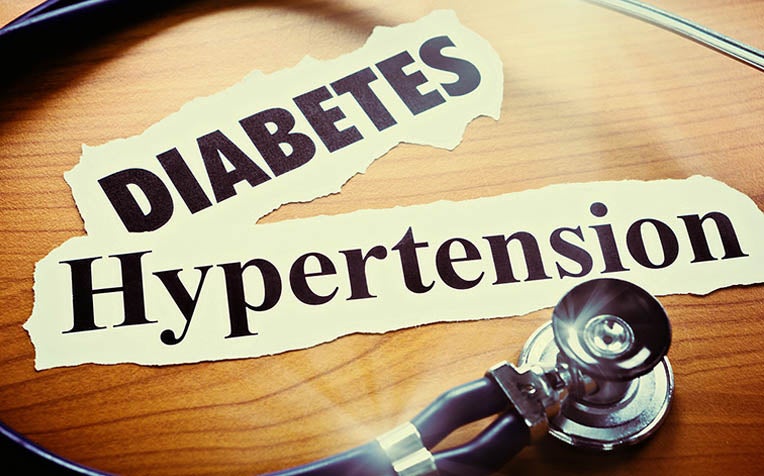
Diabetes and high blood pressure (hypertension) are linked – being a diabetic makes you twice as likely to get high blood pressure.
If you are diabetic, the risk or you getting high blood pressure is almost twice as high as someone without diabetes.
Diabetes damage your arteries and make them targets for a condition called atherosclerosis, which in turn may lead to high blood pressure. Also known as hypertension, high blood pressure is a common ailment in Singapore, affecting about 25% of those aged between 30-69.
It Is currently unclear if one condition causes the other, but what is certain is that both are linked and the chances of a person getting diagnosed with both conditions one after another is higher.
Tips to manage diabetes AND high blood pressure
Whether you are diabetic, have high blood pressure, or a combination of both, these tips are essential to keep you living a healthy and fulfilling life.
1. Watch what you eat
If you already are on a diet for diabetes, it should be relatively easy to make a few small changes to negate the risks of getting high blood pressure as well. Cut down on food with high sodium content for a start, and consult your dietician to help you plan a healthy diet!
2. Exercise
Staying active helps in regulating your blood sugar, and also helps to lower blood pressure. Talk about killing 2 birds with 1 stone! In fact, exercise does a whole lot more than that, read up more in our Fitness and Exercise section.
3. Stay within a healthy BMI
Being overweight puts you at high risk of getting both diabetes and high blood pressure.
4. Get rid of stress
According to a well being study done by Cigna, 83% of Singapore’s population is feeling stressed. Don’t contribute to that statistic! Stress can affect us both mentally (like getting depression) and physically (stress may increase blood pressure and create digestive issues, just to name a few). Here are 20 tips to relieve stress!
5. Limit or avoid alcohol
Too much alcohol can affect your pancreas (which will affect how your body deals with glucose, i.e issues with high or low blood sugar) as well as possibly causing high blood pressure. Limit yourself to one drink per day if really necessary.
6. Say no to cigarettes
Ciggies have been proven to have an immediate increase in blood pressure, and it also heightens the risk for fatty substance buildup in the arteries (see top, atherosclerosis), a condition that high blood pressure speeds along. Smoking also affects insulin resistance, and this is important to diabetics!
What constitutes high blood pressure (also known as hypertension)?
A healthy blood pressure reading should be below 120/80 mm HG. The first number is systolic pressure, and the second number is diastolic pressure. Without going into too much detail, systolic pressure basically refers to the pressure in your artery when your heart is working, and diastolic pressure refers to the pressure when your heart is in a resting state.
Fun Fact: mm HG stands for millimetres (MM) of mercury (HG in the periodic table). |
Sometimes referred to as the ‘silent killer’ because there are no visible symptoms, most people do not realise they have hypertension until they are diagnosed with it. Some factors that might contribute to high blood pressure are
High sodium intake
A sedentary lifestyle
Obesity
With that, it should come across plain as day what you should do to make yourself less at a risk of getting hypertension!
Now that you know the link between blood pressure and diabetes, as well as how to manage both conditions, you should be more aware of the actions in your life that might affect (or effect!) them. So don’t wait for something to happen before you start making a change to your lifestyle. Start living healthily today, because prevention is always better than cure!
Reg: J22
Check out other articles on diabetes and high blood pressure:
3 Foods to Avoid that Increase Blood Pressure
4 Foods to Eat to Lower Blood Pressure
5 Ways to Lower Blood Pressure Naturally
Diabetes: 8 Tips for a Healthy Diet

















 Get it on Google Play
Get it on Google Play